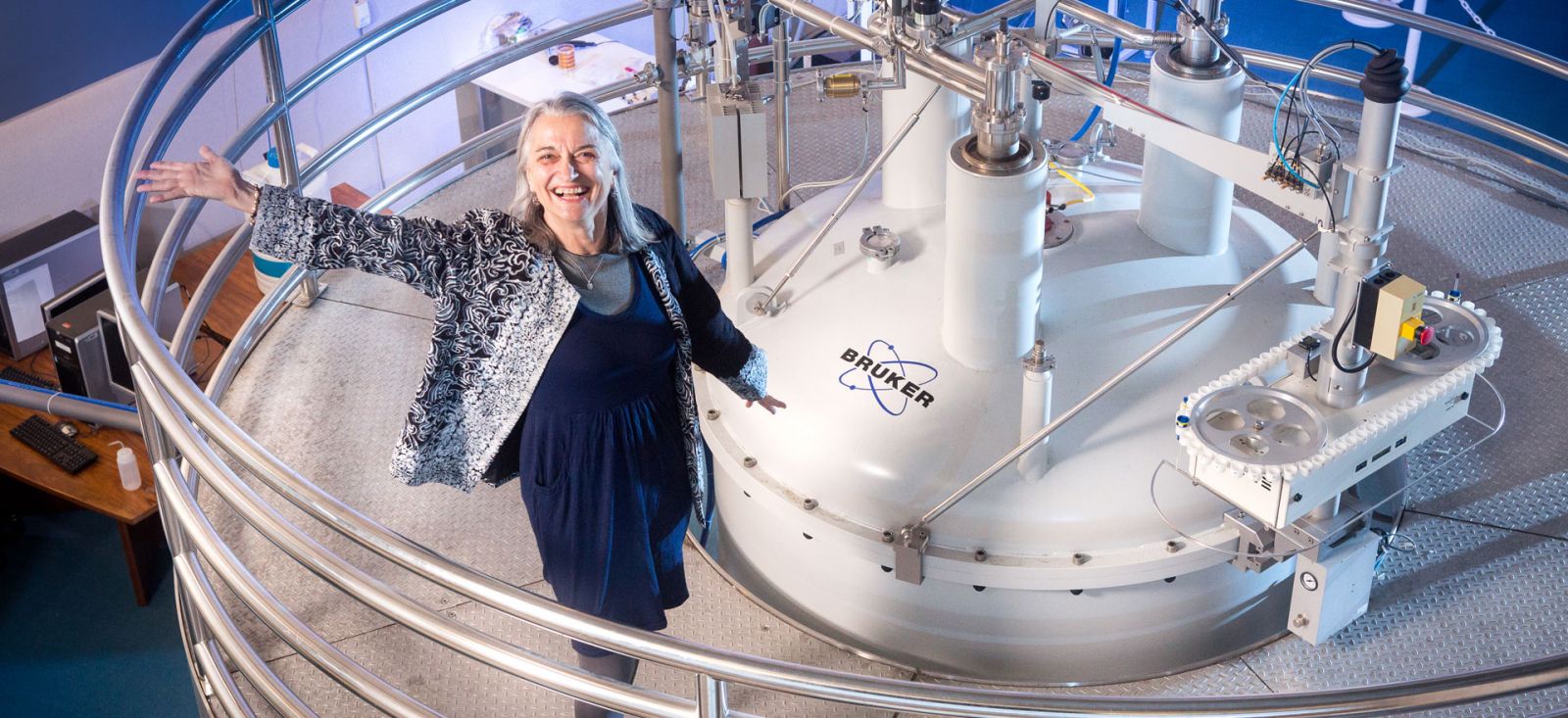Deputy Director's Blog - 16 August 2019 - Gender Equity, Plastic & the Periodic Table

This year, the year I officially retired from the School of Chemistry (but not from the Bio21 Institute), has inadvertently become as busy as ever. It has coincided with a significant year for chemistry: the International Year of the Periodic Table of Chemical Elements; and it has been wonderful and humbling to receive a Queen’s Birthday Honour, which I celebrated with the Bio21 leadership team over dinner last week. I also felt very privileged to have been chosen to introduce the World Chemistry Leaders meeting at the IUPAC 2019 Congress in Paris, France on 10 July.
IUPAC stands for the ‘International Union of Pure and Applied Chemistry’. On their website you can read that IUPAC is ‘.. the world authority on chemical nomenclature and terminology, including the naming of new elements in the periodic table; on standardized methods for measurement; and on atomic weights, and many other critically-evaluated data.’
As I gave my introductory speech at the Congress, I took the opportunity to reiterate IUPAC’s core values of promoting diversity and ethical behaviour, values that are inherent to the Sustainable Development Goals adopted by world leaders in September 2015 at an historic United Nations summit.
The 17 Sustainable Development Goals of the 2030 Agenda for Sustainable Development officially came into force on 1st of January 2016 and, during the 2019 IUPAC meeting, I highlighted two goals that I thought were particularly relevant and prescient:
(i) SDG#12, Responsible Consumption and Production: Innovations in chemical industry have the potential to reduce resource use, degradation and pollution along the whole product life cycle, while increasing quality of life with cleaner, more resilient economies.
Daily news headlines, such as ‘Paddling in plastic: meet the man swimming the Pacific garbage patch ...’, or ‘Five Melbourne councils forced to dump recycling in landfill ...’ highlight the waste crisis, within which we currently find ourselves, locally and globally. The chemistry community has contributed to the problem but is also part of the solution. One way we can start to find solutions is to look beyond the lab and to engage in the broader societal conversations around this issue. During National Science Week in August this year, I encourage you to attend the Science Festival Keynote, ‘The Future of Plastic’, with our own Professor Uta Wille contributing to the panel discussion.
I also highlighted the goal of gender equality:
(ii) SDG#5, Gender Equality: The latest Chemical & Engineering News survey shows that women are slowly consolidating corporate gains with 19% as board directors and 14% as executive officers at chemical companies. Women now make up 41% of PhD recipients in chemistry, a significant gain, but still represent less than 20% of tenured and tenure-track faculty at the top 50 chemistry schools.
On International Women′s Day 2017, I was honoured to be one of 12 women awardees of IUPAC’s 2017 Distinguished Women in Chemistry or Chemical Engineering, but as I participated in the events of the IUPAC 2019 Congress in July, I could not help but notice how few women exist at the higher levels of the chemistry community. I was fortunate to share the stage with Ilham Khadri of Solvay but several panels or prize awardees that I witnessed during the week, included only one woman or no women at all. Change can be frustratingly slow, but it was a reminder for me that much still needs to be done before we achieve gender parity in chemistry.
In our own community, it is wonderful to see women leaders join Bio21, such as Associate Professor Megan Maher, School of Chemistry, whose team brings expertise in the area of X-ray crystallography. Please make Megan and her group members feel welcome.
Finally, in this 150th anniversary of Dmitri Mendeleev’s publication of the first version of the Periodic Table of the Elements, there is much to celebrate. If, like me, you’re active on social media, you may have noticed that Bio21 has created a social media series to highlight research within the Institute that is associated with certain elements. To celebrate the International Year of the Periodic Table of Chemical Elements, Quantum Victoria commissioned artwork depicting the individual elements of the periodic table. I recently enjoyed the honour of opening the exhibition to an audience that included bright-eyed and curious school students.
In a series of hexagonal panels, artists Damon Kowarsky and Hyunju Kim, have hidden clues about the role that elements play in our everyday life. Bio21 will be hosting our own event to celebrate the periodic table, ‘The Science and Art of the Periodic Table’, 3.30 pm on 14 August 2019, where you’ll hear from, Nick Williamson, Andrew Leis and Damon Kowarsky (Zoom-ing in from Belgrade), as well as yours truly. I hope to see you there!
Professor Emeritus Frances Separovic AO FAA
Deputy Director, Bio21 Institute

